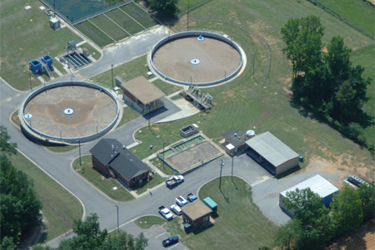Technologies To Meet Smaller Footprint And Stringent Nitrogen And Phosphorous Requirements

The Buxahatchee Wastewater Treatment Plant in Calera, Alabama was built in 1960. It upgraded in 1985 to a 0.75 MGD capacity extended aeration system with integrated clarifier and traveling aeration bridge for nitrification. By 2004, the system could no longer handle the flow capacity brought on by community growth, nor the increased stringent nutrient limits set by the Alabama Department of Environmental Management (ADEM). To resolve the plant’s issues an upgrade was in order. The City of Calera decided to investigate several other treatment technologies, and required a written process performance guarantee. The only company that met the criteria was Aqua-Aerobic Systems with the AquaSBR® sequencing batch reactor (SBR) and AquaDisk® cloth media filters. Not only was Aqua the most cost-effective choice due to the technologies’ small footprint, but the new treatment train could also provide advanced nitrogen and phosphorus removal without the use of alum or other chemicals.
Get unlimited access to:
Enter your credentials below to log in. Not yet a member of ECM Connection? Subscribe today.
